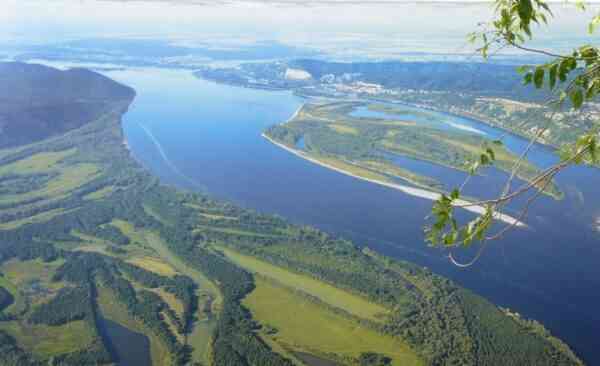For centuries, the Volga River has been the most important transport artery of all the regions through which it flows. It contains a huge amount of the most diverse fish, and in the widest places only a truly experienced swimmer can swim across it. Among all Russian rivers, the Volga is, if not the most important, then at least one of the most important.
Interesting facts about the Volga River
- It reaches a length of 3530 kilometers, and before the construction of reservoirs, it was another 160 kilometers longer.
- The Volga River brings so much water to the Caspian Sea that in the region of its delta the water in it is almost fresh (interesting facts about the Caspian Sea).
- The Volga flows only through Russia, but a small section of its delta belongs to Kazakhstan.
- Among all the rivers of Europe, the Volga takes 1st place in length.
- Four cities located on the banks of the Volga have a population of over a million people.
- The course of this river is partially blocked by 8 hydroelectric power plants.
- In some medieval European chronicles, the Volga River is mentioned under the name “Ra” (interesting facts about the Middle Ages).
- Rains bring only about 10% of its water to the Volga. Another 30% comes from groundwater, and 60% from snowmelt.
- Among all European rivers, it is the most full-flowing.
- May 20 is officially considered the day of the Volga River in Russia.
- Some peoples call it “Itil”, which in Arabic means “river of all rivers”.
- More than 1000 smaller rivers flow into it.
- Hydrologists are still arguing whether the Kama is a tributary of the Volga, or vice versa, because the Kama is noticeably more full-flowing.
- The Volga began to form about 5 million years ago, its source was then in the Ural Mountains (interesting facts about the Ural Mountains).
- Prior to the construction of reservoirs, floods on the Volga were often very destructive, and caused significant damage to coastal settlements.
- Once, during the shipping season, half a million barge haulers worked on the Volga.
- Due to the powerful and rather fast current, sailing ships during the flood could not rise up the Volga against the current. Modern ships, of course, are strong enough.
- The Volga delta is larger than the delta of all other rivers in Europe, and due to the decrease in the level of the Caspian Sea, it continues to increase.
- Flamingo birds can be seen in the south of the Volga during the season.
- The largest fish living in the Volga is the beluga. In general, she lives in the Caspian Sea, but during the spawning period she enters the river. Previously, it generally reached Tver, but now it is not allowed further by the hydroelectric power stations built on the river (interesting facts about fish).
- In some places of the Volga, lotuses grow.
- The first exploration of the great river was undertaken only in 1875.
- The Volga accounts for about 30% of all garbage entering Russian water bodies.
- The modern source of this river is a stream in the village of Volgoverkhovye, on the Valdai Upland.
- In winter, the Volga usually freezes completely, but due to the colder climate, its northern part freezes a month and a half earlier than the southern one.
